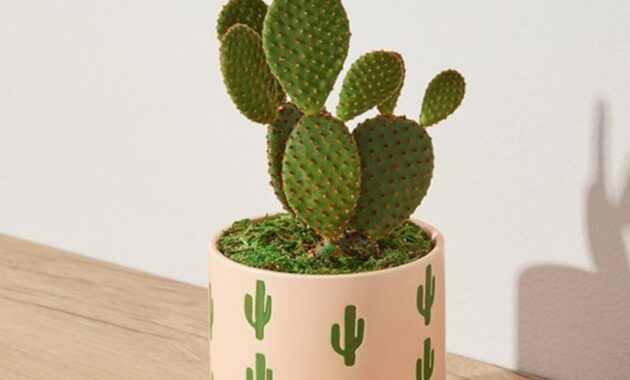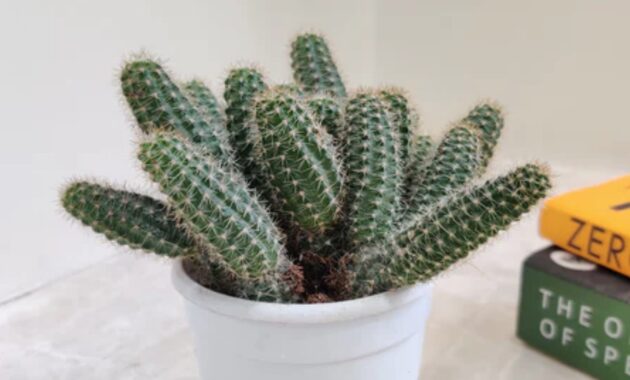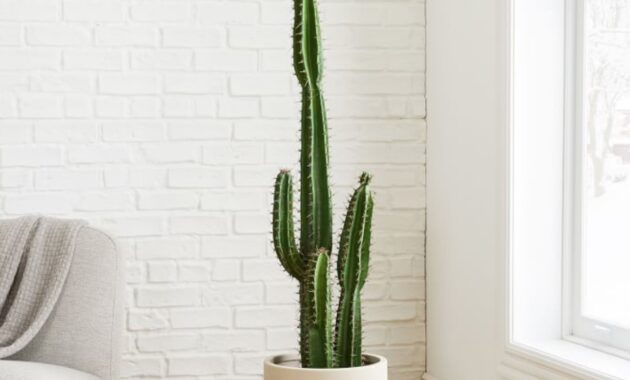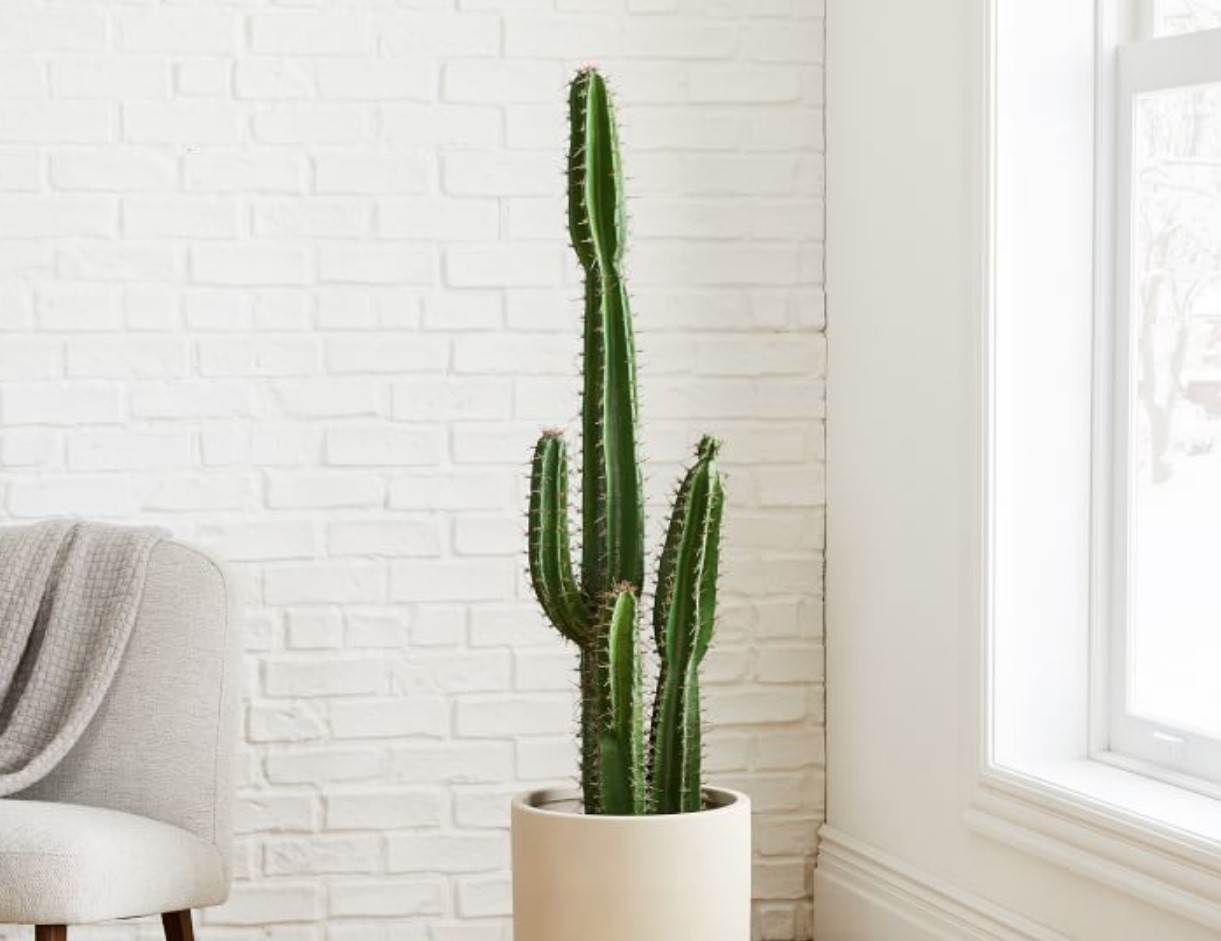
What is a Cactus Plant?
Cactus plants are succulent plants that have adapted to survive in arid environments. They come in a variety of shapes and sizes, from small, globular plants to tall, columnar cacti. Cacti are known for their ability to store water in their thick, fleshy stems, which helps them survive long periods without rain.
Types of Cactus Plants
There are thousands of different cactus species, each with its own unique characteristics. Here are some of the most popular types of cactus plants:
- Opuntia: These cacti are characterized by their flat, paddle-shaped pads. They are commonly known as prickly pear cacti.
- Mammillaria: These cacti are globular or cylindrical in shape and are covered in spines. They often produce beautiful clusters of flowers.
- Cereus: These cacti are columnar in shape and can grow very tall. They are often used as ornamental plants in gardens.
- Echinopsis: These cacti are globular or cylindrical in shape and are covered in spines. They are known for their large, showy flowers.
Cactus Plant Benefits
In addition to their aesthetic appeal, cactus plants offer a number of benefits:
- Air purification: Cacti can help to improve indoor air quality by absorbing toxins and releasing oxygen.
- Stress relief: Caring for plants, including cacti, can help to reduce stress and anxiety.
- Low maintenance: Cacti are relatively low-maintenance plants, making them ideal for busy people.
Growing Cactus Plants at Home
Growing cactus plants at home is easy, even for beginners. Here are some tips for growing healthy cactus plants:
- Choose the right pot: Select a pot that is slightly larger than the cactus plant’s root ball. Make sure the pot has drainage holes to prevent waterlogging.
- Use the right soil: Cacti need well-draining soil. A cactus potting mix is ideal.
- Water wisely: Cacti are drought-tolerant plants, so it’s important not to overwater them. Water your cactus plant deeply but infrequently, allowing the soil to dry out completely between waterings.
- Provide adequate sunlight: Cacti need plenty of sunlight to thrive. Place your cactus plant in a sunny location, such as a south-facing window.
- Fertilize occasionally: Fertilize your cactus plant once or twice a year with a balanced liquid fertilizer.

Outdoor Cactus Plants
In warmer climates, cacti can be grown outdoors. When planting cacti outdoors, it’s important to choose a location that receives plenty of sunlight. Also, be sure to protect your cacti from frost during the winter months.
Best Soil for Cactus Plants
As mentioned earlier, cacti need well-draining soil. A cactus potting mix is ideal because it contains a mixture of sand, perlite, and other materials that help to improve drainage. You can also create your own cactus potting mix by combining equal parts potting soil, sand, and perlite.
Cactus Plant Watering Tips
Overwatering is one of the most common mistakes people make when caring for cactus plants. As a general rule, water your cactus plant deeply but infrequently, allowing the soil to dry out completely between waterings. The frequency of watering will depend on the climate, the type of cactus, and the size of the pot.
Cactus Plant Sunlight Requirements
Cacti are sun-loving plants. They need at least 6 hours of direct sunlight per day to thrive. If you live in a climate with low light levels, you may need to supplement your cactus plant’s light with a grow light.
Small Cactus Plants for Home
If you’re short on space, small cactus plants are a great option for your home. Some popular small cactus plants include:
- Mammillaria gracilis: This cactus is small and globular, with white spines.
- Rebutia minuscula: This cactus is small and globular, with colorful flowers.
- Schlumbergera: This cactus is also known as Christmas cactus or Thanksgiving cactus. It produces beautiful flowers during the winter months.
Cactus Plant Arrangement Ideas
Cactus plants can be arranged in a variety of creative ways. Here are a few ideas:
- Terrarium: Create a miniature desert landscape in a glass terrarium.
- Succulent garden: Combine cacti with other succulents to create a colorful and interesting display.
- Vertical garden: Use vertical planters to create a unique and space-saving cactus garden.
Flowering Cactus Plants
Many cactus plants produce beautiful flowers. Some of the most popular flowering cacti include:
- Echinopsis: These cacti produce large, showy flowers in a variety of colors.
- Mammillaria: These cacti produce clusters of small, colorful flowers.
- Schlumbergera: These cacti produce beautiful flowers during the winter months.
Easy-to-Grow Cactus Plants
If you’re a beginner, there are a number of easy-to-grow cactus plants to choose from. Some of the easiest cactus plants to grow include:
- Opuntia: These cacti are very tolerant of neglect.
- Mammillaria: These cacti are low-maintenance and easy to care for.
- Cereus: These cacti are relatively easy to grow and can tolerate a wide range of conditions.
Desert Cactus Plants
Desert cactus plants are well-adapted to survive in arid environments. They are often characterized by their thick, fleshy stems and spines. Some popular desert cactus plants include:
- Saguaro cactus: This iconic cactus is native to the Sonoran Desert.
- Barrel cactus: This cactus is spherical in shape and is covered in spines.
- Organ pipe cactus: This tall, columnar cactus is native to the Sonoran Desert.

Low-Maintenance Cactus Plants
If you’re looking for a low-maintenance plant, cactus plants are a great option. They require minimal care and can thrive in a variety of conditions. Some of the most low-maintenance cactus plants include:
- Opuntia: These cacti are very tolerant of neglect.
- Mammillaria: These cacti are low-maintenance and easy to care for.
- Cereus: These cacti are relatively easy to grow and can tolerate a wide range of conditions.
Conclusion
Cactus plants are beautiful and versatile plants that can add a touch of the desert to your home or garden. With proper care, cactus plants can thrive for many years. By following the tips in this guide, you can enjoy the beauty and benefits of these unique plants.
FAQs
- How often should I water my cactus plant?
The frequency of watering will depend on the climate, the type of cactus, and the size of the pot. As a general rule, water your cactus plant deeply but infrequently, allowing the soil to dry out completely between waterings. - What is the best way to propagate a cactus plant?
Cactus plants can be propagated by stem cuttings or offsets. To propagate a cactus plant by stem cutting, simply cut off a healthy stem and allow the cut end to dry for a few days. Then, plant the cutting in a pot of cactus potting mix. To propagate a cactus plant by offset, gently remove an offset from the parent plant and plant it in a pot of cactus potting mix. - Why is my cactus plant turning yellow?
There are a few reasons why your cactus plant may be turning yellow. One possibility is that the plant is not getting enough sunlight. Another possibility is that the plant is being overwatered. If your cactus plant is turning yellow, try moving it to a sunnier location and reduce the frequency of watering. - Can I grow a cactus plant indoors?
Yes, you can grow cactus plants indoors. However, it’s important to choose a location that receives plenty of sunlight. You may also need to supplement your cactus plant’s light with a grow light. - What are some common pests that affect cactus plants?
Some common pests that affect cactus plants include mealybugs, scale insects, and spider mites. If you see any signs of pests on your cactus plant, treat it with an insecticidal soap or neem oil.



